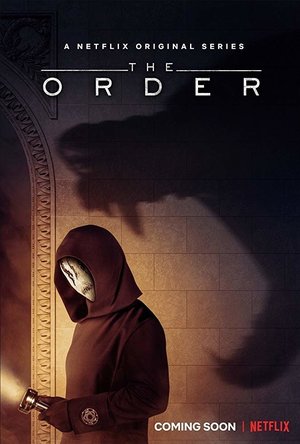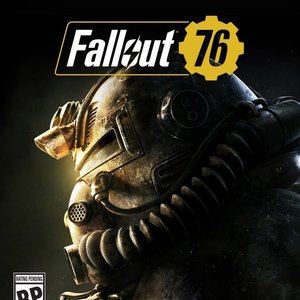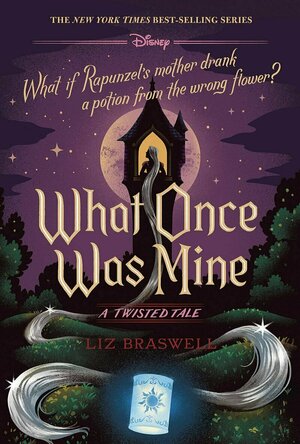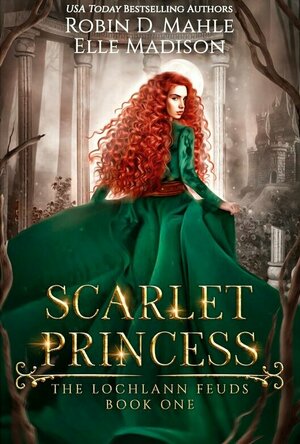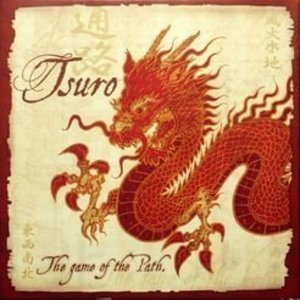Search
Search results
Charlie Cobra Reviews (1840 KP) rated The Order in TV
Jul 6, 2020 (Updated Jul 6, 2020)
Don't Call Them Witches - 7/10
The Order is a 2019 supernatural horror/drama tv series created by Dennis Heaton and a team of writers including: Dennis Heaton, Shelley Eriksen, Rachel Langer, Jennica Harper, Penny Gummerson and Jason Filiatrault. The show was produced by Nomadic Pictures with producers Petros Danabassis, Jay Daniel Beechinor, and Morris Chapdelaine and released on Netflix in March. The shows stars Jake Manley, Sarah Grey, Matt Frewer, and Max Martini.
Thrust into a world of magic and monsters (werewolves), Jack Morten (Jake Manley) must pledge himself to a secret society so that he can avenge the death of his mother by their leader, Edward Coventry (Max Martini). His only family is his grandfather, "Pops" (Matt Frewer), the genius behind their plan for him to infiltrate the order and learn what he can to bring them down from the inside. Things go from bad to worse as he uncovers The Hermetic Order of the Blue Rose are practitioners of magic and someone or something is killing their pledges on campus. And more complications arise as he becomes enamoured with a higher ranking member Alyssa Drake (Sarah Grey) and a group of Knights whose mission is to stop evil magic users.
The Order is a decent show. I liked it alot but it was hard for me to get behind. It definitely has a lot of flaws and I can see a lot of people (like critics) tearing this show apart. That being said, I can't believe it has 100% on rotten tomatoes at this point or that it has been renewed for a second season. It was pretty slow building to me especially because I thought it was only going to be a secret society type show like the movie The Skulls but with a werewolf angle to it. I was very surprised when it was more about a magic secret society and later had a werewolf element to it. What I really didn't care for so much was the love theme to it that made me want to compare it to Twilight. You'll know what I'm talking about if you give it a chance. I really wanted to give this show a 6. There was a lot to hate in this show but it did get better towards the end. One thing the dialogue was full of cussing, which I didn't mind at all but it felt very amateurish. It made me laugh a lot but it also made me feel like the writers were in high school still. And I believe it's the main reason for the TV-MA rating. Which is another complaint I had. I don't think that for a rated TV-MA show, particularly a horror one, did they have enough violence, blood or gore. It felt very watered down to me in those respects. To me it seems like it was a cool idea, they had good actors who suffered from poor script and dialogue with a decent enough plot but a director(s) who were going for more of a Twilight vibe. As it gets farther into it did get better but barely got a 7 from me. As I write this I'm still contemplating whether to change my rating. It did do somethings quite well. They didn't mess up on the werewolves and even did them in a unique way and I appreciated the world building and
lore that they brought to them. Even the way they portrayed magic in the series was well done. I also generally liked the second half of the seasons' story arc and plot. I give this show a 7/10. I don't recommend it to anyone unless you were a big fan of the Twilight films or if you are just someone who watches anything with magic or werewolves.
Thrust into a world of magic and monsters (werewolves), Jack Morten (Jake Manley) must pledge himself to a secret society so that he can avenge the death of his mother by their leader, Edward Coventry (Max Martini). His only family is his grandfather, "Pops" (Matt Frewer), the genius behind their plan for him to infiltrate the order and learn what he can to bring them down from the inside. Things go from bad to worse as he uncovers The Hermetic Order of the Blue Rose are practitioners of magic and someone or something is killing their pledges on campus. And more complications arise as he becomes enamoured with a higher ranking member Alyssa Drake (Sarah Grey) and a group of Knights whose mission is to stop evil magic users.
The Order is a decent show. I liked it alot but it was hard for me to get behind. It definitely has a lot of flaws and I can see a lot of people (like critics) tearing this show apart. That being said, I can't believe it has 100% on rotten tomatoes at this point or that it has been renewed for a second season. It was pretty slow building to me especially because I thought it was only going to be a secret society type show like the movie The Skulls but with a werewolf angle to it. I was very surprised when it was more about a magic secret society and later had a werewolf element to it. What I really didn't care for so much was the love theme to it that made me want to compare it to Twilight. You'll know what I'm talking about if you give it a chance. I really wanted to give this show a 6. There was a lot to hate in this show but it did get better towards the end. One thing the dialogue was full of cussing, which I didn't mind at all but it felt very amateurish. It made me laugh a lot but it also made me feel like the writers were in high school still. And I believe it's the main reason for the TV-MA rating. Which is another complaint I had. I don't think that for a rated TV-MA show, particularly a horror one, did they have enough violence, blood or gore. It felt very watered down to me in those respects. To me it seems like it was a cool idea, they had good actors who suffered from poor script and dialogue with a decent enough plot but a director(s) who were going for more of a Twilight vibe. As it gets farther into it did get better but barely got a 7 from me. As I write this I'm still contemplating whether to change my rating. It did do somethings quite well. They didn't mess up on the werewolves and even did them in a unique way and I appreciated the world building and
lore that they brought to them. Even the way they portrayed magic in the series was well done. I also generally liked the second half of the seasons' story arc and plot. I give this show a 7/10. I don't recommend it to anyone unless you were a big fan of the Twilight films or if you are just someone who watches anything with magic or werewolves.

Cartoon Network App
Entertainment, Lifestyle and Stickers
App
Whether you want to catch up on the latest full episodes (available the day after they air!) or take...
Bob Mann (459 KP) rated Joker (2019) in Movies
Nov 10, 2019
Joachim Phoenix - Oscar winning performance? (1 more)
Look and feel of the film - technically brilliant
A loser's tale.
“Joker” has managed to stir up a whirlwind of controversy, centring partly around the level of violence included but also on the use of “that song” on the soundtrack. But putting aside that flurry of commentary, what of the film itself?
Man, this is a dark film! It’s as much of an anti-superhero film as this year’s “Brightburn“. The Batman legacy has addressed the mental state of the protagonists before (both that of the hero and the villains). Here we have a real study of how a mentally unstable no-hoper can be pushed over the edge by bigotry, carelessness and government cut-backs.
Indeed, there is something alarmingly prescient about the movie’s plot line, watching this as we (in the UK) are in the month of possible (or as Boris Johnson would say, definite) Brexit madness! “Is it me, or is it getting crazier out there?” Arthur Fleck muses to his social worker (Sharon Washington). And a rant by Arthur late on goes “Everybody just yells and screams at each other. Nobody’s civil anymore. Nobody thinks what it’s like to be the other guy. You think men like Thomas Wayne ever think what it’s like to be someone like me? To be somebody but themselves? They don’t. They think that we’ll just sit there and take it, like good little boys! That we won’t werewolf and go wild!” Chilling words as we possibly face a very bumpy October and November in the UK.
After reviewing “Judy” I wouldn’t be the least surprised if I’d just seen the Best Actress award bagged (by Renée Zellweger). Now, with “Joker”, surely Joachim Phoenix might bag his first (and well overdue in my book) Oscar. Although nominated before (for “Gladiator”, “Walk the Line” and “The Master”) he’s never won. Here Phoenix’s physical transformation into Arthur Fleck is SIMPLY EXTRAORDINARY. And the way he captures the (medically) induced fits of helpless laughter, ending in a sort of choking fit, is brilliant and replicated to a ‘T’ on multiple occasions.
I loved “You Were Never Really Here“, primarily due to Phoenix’s pitch-perfect performance. And “Joker” reminded me very much of Lynne Ramsey‘s film: a disturbed loner, looking after his elderly mother; with violence meted out to wrong-doers. Joe is almost the yin to Arthur Fleck’s yang: Joe is an invisible man who is very much present; Arthur is a very visible man who thinks he is invisible. There’s even comment by Fleck towards the end of the film that sometimes he thinks he’s ‘not really there at all’! (A deliberate ‘in’ joke in reference to that film?)
After some pretty piss-poor “pension grabs” in recent years, culminating in the appalling career- nadir of “Dirty Grandpa” in 2016, Robert De Niro comes good with a fine performance as the idolised but thoughtless and cruel talk-show host Murray Franklin. It’s very much a supporting role, but delivered with great aplomb.
Also great again is “Deadpool 2“‘s Zazie Beetz (a great trivia answer for an actor with three ‘z’s’ in the name). This angle of the story is deviously clever, and Zazie handles the various twists and turns brilliantly.
Movie violence needs to be taken in context to both the film’s story and to the movie’s certificate. For those expecting a light and fluffy “Avengers” style of movie, they might be shocked by what they see. True that the film definitely pushes the boundaries of what I think is acceptable in a UK15-certificate film. … I suspect there were HEATED discussions at the BBFC after this screening! The violence though seems comparable to some other 15’s I’ve seen: a DIY-store drill scene in “The Equalizer” comes to mind.
A particularly brutal scene is reminiscent of a climactic scene in “Once Upon a Time… in Hollywood“, such that Quentin Tarantino might have just cause to appeal his ‘UK18’ certificate.
You might argue about the level of violence that SHOULD be shown in a 15 certificate film. But I think the violence portrayed – given this is in the known context an origin story for a psychopathic killer – is appropriate. I personally found the Heath Ledger‘s Joker’s “pencil trick” scene in “The Dark Knight” more disturbing, given it was a 12 certificate.
I have less sympathy for the inclusion of “Rock and Roll Part 2” on the soundtrack. The fact that a convicted paedophile (I refuse to say his name) is profiting from the ticket sales is galling. This is almost deliberately courting controversy. There has been some view that this is a “traditional” chant song at US football matches (as “The Hey Song”). But most (all?) teams have now recognized the connection and stopped its use. At least here the director and producers should have more of a ‘world view’ on this.
Where “Hangover” director Todd Phillips does recover some of this respect is in the quality of the script (co-written with Scott Silver) and the direction. It’s misdirection without mis-direction! Some of the twists in the plot (no spoilers here!) I did not see coming, and certain aspects of the story (again no spoilers!) are left brilliantly (and chillingly) vague.
Sure, it borrows heavily in story-line and mood from Martin Scorsese‘s “Taxi Driver”. And I was also reminded of 1993’s Joel Schumacher flick “Falling Down” where Michael Douglas is an ordinary man pushed to the edge and beyond by a series of life’s trials. But if you want to criticise a film for “not being 100% original” then let’s start at the top of the 2019 IMDB listings and keep going! I’ve also seen comment from some that criticises the somewhat clunky overlay of the Batman back-story into the script. I also understand that view but I didn’t personally share it.
Elsewhere I would not be surprised if the movie gets garlanded with technical Oscar nominations aplenty come January. The cinematography, by Phillips-regular Lawrence Sher, is exquisite in setting the grimy 70’s tone. (I loved the retro Warner Brothers logo too). And both video and sound editing is top-notch. Not forgetting a sonorous cello-heavy soundtrack that perfectly suits the mood. Want to put a bet on which film might top the “number of Oscar nominations” list? This might not be a bad choice.
Dark and brooding, with a slow-burn start, this is a proper drama that might make action superhero fans fidgety. But I simply loved it, and would love to carve out the time to give it a re-watch. The Phoenix performance is extraordinary. Will this make my Top 10 of the year? Fingers to head, and pull the trigger…. it’s a no-brainer.
Man, this is a dark film! It’s as much of an anti-superhero film as this year’s “Brightburn“. The Batman legacy has addressed the mental state of the protagonists before (both that of the hero and the villains). Here we have a real study of how a mentally unstable no-hoper can be pushed over the edge by bigotry, carelessness and government cut-backs.
Indeed, there is something alarmingly prescient about the movie’s plot line, watching this as we (in the UK) are in the month of possible (or as Boris Johnson would say, definite) Brexit madness! “Is it me, or is it getting crazier out there?” Arthur Fleck muses to his social worker (Sharon Washington). And a rant by Arthur late on goes “Everybody just yells and screams at each other. Nobody’s civil anymore. Nobody thinks what it’s like to be the other guy. You think men like Thomas Wayne ever think what it’s like to be someone like me? To be somebody but themselves? They don’t. They think that we’ll just sit there and take it, like good little boys! That we won’t werewolf and go wild!” Chilling words as we possibly face a very bumpy October and November in the UK.
After reviewing “Judy” I wouldn’t be the least surprised if I’d just seen the Best Actress award bagged (by Renée Zellweger). Now, with “Joker”, surely Joachim Phoenix might bag his first (and well overdue in my book) Oscar. Although nominated before (for “Gladiator”, “Walk the Line” and “The Master”) he’s never won. Here Phoenix’s physical transformation into Arthur Fleck is SIMPLY EXTRAORDINARY. And the way he captures the (medically) induced fits of helpless laughter, ending in a sort of choking fit, is brilliant and replicated to a ‘T’ on multiple occasions.
I loved “You Were Never Really Here“, primarily due to Phoenix’s pitch-perfect performance. And “Joker” reminded me very much of Lynne Ramsey‘s film: a disturbed loner, looking after his elderly mother; with violence meted out to wrong-doers. Joe is almost the yin to Arthur Fleck’s yang: Joe is an invisible man who is very much present; Arthur is a very visible man who thinks he is invisible. There’s even comment by Fleck towards the end of the film that sometimes he thinks he’s ‘not really there at all’! (A deliberate ‘in’ joke in reference to that film?)
After some pretty piss-poor “pension grabs” in recent years, culminating in the appalling career- nadir of “Dirty Grandpa” in 2016, Robert De Niro comes good with a fine performance as the idolised but thoughtless and cruel talk-show host Murray Franklin. It’s very much a supporting role, but delivered with great aplomb.
Also great again is “Deadpool 2“‘s Zazie Beetz (a great trivia answer for an actor with three ‘z’s’ in the name). This angle of the story is deviously clever, and Zazie handles the various twists and turns brilliantly.
Movie violence needs to be taken in context to both the film’s story and to the movie’s certificate. For those expecting a light and fluffy “Avengers” style of movie, they might be shocked by what they see. True that the film definitely pushes the boundaries of what I think is acceptable in a UK15-certificate film. … I suspect there were HEATED discussions at the BBFC after this screening! The violence though seems comparable to some other 15’s I’ve seen: a DIY-store drill scene in “The Equalizer” comes to mind.
A particularly brutal scene is reminiscent of a climactic scene in “Once Upon a Time… in Hollywood“, such that Quentin Tarantino might have just cause to appeal his ‘UK18’ certificate.
You might argue about the level of violence that SHOULD be shown in a 15 certificate film. But I think the violence portrayed – given this is in the known context an origin story for a psychopathic killer – is appropriate. I personally found the Heath Ledger‘s Joker’s “pencil trick” scene in “The Dark Knight” more disturbing, given it was a 12 certificate.
I have less sympathy for the inclusion of “Rock and Roll Part 2” on the soundtrack. The fact that a convicted paedophile (I refuse to say his name) is profiting from the ticket sales is galling. This is almost deliberately courting controversy. There has been some view that this is a “traditional” chant song at US football matches (as “The Hey Song”). But most (all?) teams have now recognized the connection and stopped its use. At least here the director and producers should have more of a ‘world view’ on this.
Where “Hangover” director Todd Phillips does recover some of this respect is in the quality of the script (co-written with Scott Silver) and the direction. It’s misdirection without mis-direction! Some of the twists in the plot (no spoilers here!) I did not see coming, and certain aspects of the story (again no spoilers!) are left brilliantly (and chillingly) vague.
Sure, it borrows heavily in story-line and mood from Martin Scorsese‘s “Taxi Driver”. And I was also reminded of 1993’s Joel Schumacher flick “Falling Down” where Michael Douglas is an ordinary man pushed to the edge and beyond by a series of life’s trials. But if you want to criticise a film for “not being 100% original” then let’s start at the top of the 2019 IMDB listings and keep going! I’ve also seen comment from some that criticises the somewhat clunky overlay of the Batman back-story into the script. I also understand that view but I didn’t personally share it.
Elsewhere I would not be surprised if the movie gets garlanded with technical Oscar nominations aplenty come January. The cinematography, by Phillips-regular Lawrence Sher, is exquisite in setting the grimy 70’s tone. (I loved the retro Warner Brothers logo too). And both video and sound editing is top-notch. Not forgetting a sonorous cello-heavy soundtrack that perfectly suits the mood. Want to put a bet on which film might top the “number of Oscar nominations” list? This might not be a bad choice.
Dark and brooding, with a slow-burn start, this is a proper drama that might make action superhero fans fidgety. But I simply loved it, and would love to carve out the time to give it a re-watch. The Phoenix performance is extraordinary. Will this make my Top 10 of the year? Fingers to head, and pull the trigger…. it’s a no-brainer.
Sheridan (209 KP) rated the Xbox One version of Fallout 76 in Video Games
Dec 29, 2018
Challenging Gameplay (3 more)
Huge Open World
Ability to Modify Items
CAMP Set Up
Tragic Graphics (4 more)
Online Only
No Dogmeat :(
STASH box limit
Feels Repetitive
A Game to End an Epic Series?
Let's face it - there's a lot of Fallout fans out there and these fans have a whole heap to say about this game. The big question is - is this a game for the fans? Not really, no. I don't *hate* it, but I'm not totally on board with it either. Now I've been playing the Fallout games for a very long time, I've completed both Fallout 3 and Fallout New Vegas serveral times and have completed the majority of Fallout 4 too. Fallout 76 is just - not a good game. There are aspects I quite like - the CAMP, the STASH boxes littered around so you don't have to fast travel all the time, the ability to modify weapons and amour, the huge open world to explore - I like all of that. What I hate is that it just doesn't feel like a Fallout game, the storyline just isn't there - I don't just start playing and realise literal hours have passed. There's no NPCs, no companions and worst of all there's no Dogmeat. I mean, sure other companions I understand, it's an online only game, I can see how running around with a crew could become combersome but - I miss my doggo! I can't stand that it's online only - sure give us the option to but I've never been a fan of being forced to play online, I game to relax, not to interact with others - plus no pause is extremely annoying. The graphics are terrible considering what other companies have come out with in 2018, it feels like FO3 graphics. The limit on the STASH box is currently 600lbs but mine is full and I keep having to get rid of stuff that I actually need. The repetitive going back and forth on missions and having to travel from one side of the map to the other while doing a mission is extremely frustrating, especially considering you're pretty much always carrying too much stuff (you literally need a ton of weapons, ammo, food & water to survive).
Overall I don't love it, but I don't hate it.
In short;
Was it worth the $120 preorder price? F**k no.
Is it something I'll play complusively until I've done everything?
No.
Does it ensare you and leave you excited to play again?
No.
Does it exceed Bethesda's big exciting lead up to release?
Certainly not.
Is it the worst game ever?
No, not really.
Is it truly a Fallout game?
Nope.
Does it feel like a dodgy, half-assed turd that the developers crapped out to make money?
Why, yes, yes it does.
Is it a game for Fallout fans?
Maybe, if you're into online play with friends then I guess? If you look past all the bugs, the sub-par graphics and the dull unimaginative storyline sure, this might be a game for you.
Would I recommend it?
No, not unless it's in the $20 bin at EB and you have literally NOTHING else to play.
I'm just saying if this game were a puddle, I could stand in it bare foot and not get my feet wet - that's how much depth it has...
It isn't the *worst* thing I've spent money on (Technomancer takes that spot with Recore as a close second), but it's definitely not something to play if you're a Fallout fan. Just stick to the old stuff, it's waaaay better...
Overall I don't love it, but I don't hate it.
In short;
Was it worth the $120 preorder price? F**k no.
Is it something I'll play complusively until I've done everything?
No.
Does it ensare you and leave you excited to play again?
No.
Does it exceed Bethesda's big exciting lead up to release?
Certainly not.
Is it the worst game ever?
No, not really.
Is it truly a Fallout game?
Nope.
Does it feel like a dodgy, half-assed turd that the developers crapped out to make money?
Why, yes, yes it does.
Is it a game for Fallout fans?
Maybe, if you're into online play with friends then I guess? If you look past all the bugs, the sub-par graphics and the dull unimaginative storyline sure, this might be a game for you.
Would I recommend it?
No, not unless it's in the $20 bin at EB and you have literally NOTHING else to play.
I'm just saying if this game were a puddle, I could stand in it bare foot and not get my feet wet - that's how much depth it has...
It isn't the *worst* thing I've spent money on (Technomancer takes that spot with Recore as a close second), but it's definitely not something to play if you're a Fallout fan. Just stick to the old stuff, it's waaaay better...

The Amazing Spider-Man
Games and Entertainment
App
Optimized for the 4-inch Retina display on iPhone 5! THE OFFICIAL GAME FROM THE 2012 MOVIE "THE...
Lottie disney bookworm (1056 KP) rated What Once Was Mine in Books
Oct 25, 2021
𝑾𝒉𝒂𝒕 𝒊𝒇 𝑹𝒂𝒑𝒖𝒏𝒛𝒆𝒍’𝒔 𝒎𝒐𝒕𝒉𝒆𝒓 𝒅𝒓𝒂𝒏𝒌 𝒂 𝒑𝒐𝒕𝒊𝒐𝒏 𝒇𝒓𝒐𝒎 𝒕𝒉𝒆 𝒘𝒓𝒐𝒏𝒈 𝒇𝒍𝒐𝒘𝒆𝒓?
As you will all know by now, I am in love with the Twisted Tales series and have to read each installment as they are released. What Once was Mine is the 12th Twisted Tale book and the 7th written by Liz Braswell so to say I was excited would be an understatement.
As always, TT books come with a tag line to lure you in and this one is “What if Rapunzel’s mother drank a potion from the wrong flower?” Yes, instead of the golden Sundrop flower, the ailing pregnant queen is mistakenly given a potion using the Moondrop flower, resulting in a silver-haired princess whose power kills rather than heals!
Of course, that casts the whole locking the princess in a tower concept into an entirely new light! However, many of the other elements remain the same as Disney’s ‘Tangled’ movie: Gothel is Rapunzel’s captor and “mother”, Flynn steals a crown and is on the run from the Stabbington brothers and Rapunzel is desperate to see the floating lights.
What Liz Braswell manages to do (very well, in my opinion) is to maintain all these similarities, keeping her readers rooted to the original story but also to bend the original fairytale into something a bit more mature, a bit darker and, in some cases, a bit more real.
“𝙏𝙝𝙚 𝙩𝙧𝙪𝙩𝙝 𝙖𝙗𝙤𝙪𝙩 𝙮𝙤𝙪 𝙞𝙨 𝙖𝙡𝙡 𝙩𝙖𝙣𝙜𝙡𝙚𝙙, 𝙡𝙞𝙠𝙚 𝙮𝙤𝙪𝙧 𝙗𝙧𝙖𝙞𝙙𝙨, 𝙍𝙖𝙥𝙪𝙣𝙯𝙚𝙡”
What Once was Mine is written from Rapunzel’s perspective. Now, this may be an obvious choice, but it also gives Braswell the opportunity to show her protagonist in a slightly more mature light than we are used to. Yes, Rapunzel is scatty, enthusiastic and teeth-grittingly cheerful about everything but she also believes she is dangerous and that she belongs in the tower for the safety of others.
Rapunzel has always been told that her hair killed her parents and that Gothel has been charged with her care and protection. However, what I really enjoyed about Braswell’s Rapunzel is that, although she begins with the same blind faith in Gothel as she has in the movie, she soon develops an inner turmoil of emotions with regards to her captor, questioning where she spends her days and recognising the little digs often made at the daughter’s expense.
As her journey continues, Rapunzel observes other mother-daughter relationships and her doubt and distrust of Gothel begins to build as a result. Lords, ladies and bandits alike are hunting for Rapunzel in order to claim her as their prize but this couldn’t be orchestrated by her mother, the only family she has ever known, could it?
“𝘽𝙚𝙜𝙞𝙣 𝙮𝙤𝙪𝙧 𝙣𝙞𝙣𝙚𝙩𝙚𝙚𝙣𝙩𝙝 𝙮𝙚𝙖𝙧 𝙗𝙮 𝙛𝙤𝙧𝙜𝙞𝙫𝙞𝙣𝙜 𝙮𝙤𝙪𝙧𝙨𝙚𝙡𝙛, 𝙍𝙖𝙥𝙪𝙣𝙯𝙚𝙡. 𝙏𝙝𝙖𝙩’𝙨 𝙖 𝙛𝙖𝙧 𝙗𝙚𝙩𝙩𝙚𝙧 𝙜𝙞𝙛𝙩 𝙩𝙝𝙖𝙣 𝙛𝙡𝙤𝙖𝙩𝙞𝙣𝙜 𝙡𝙖𝙣𝙩𝙚𝙧𝙣𝙨.”
I have conflicting feelings when it comes to the darker elements of What Once Was Mine. The inclusion of the very real Countess Bathory took me by surprise and was quite gruesome in places: not a problem for a grown-up Disney nerd but I’m not sure whether I will be passing this one along to the Mini Bookworm any time soon.
There is also the narrator of the story: a brother making up an alternative Rapunzel story for his sister while she is undergoing chemo. I understand this is an emotive topic for the author and I almost got it as a tool for the story-telling, enabling the use of quite modern, colloquial terms such as “murderhair” and enabling the creative inclusion of characters such as Maximus.
I really wanted this technique to be profound and make the story mean more, such as fairytales having an important place in the modern world for example. Unfortunately, it fell a little flat for me: it was an interesting tweak but it didn’t make me feel as much as I wanted it to.
It is not all doom and gloom though, Rapunzel’s perspective of the world provides comic moments: her (limited) knowledge of the world comes from the 37 books that she owns, leading to a moose that is definitely a squirrel and a cat which acts suspiciously like a fox. We are also not deprived of the regulars of The Snuggly Duckling, indeed all of your favourites from the film turn up for this novel.
Braswell’s characterisation when it came to Flynn was spot on in my opinion. The observation by Rapunzel that there is the “real” Flynn and then there is the charming, roguish mask he uses was perfect! Gina was also a great addition, desperately trying to be an adventurer/criminal and not being taken seriously just because she is a girl. The relationship between her and Flynn was adorable and, of course, Gina’s mother is just legendary.
“𝙎𝙝𝙚 𝙬𝙖𝙨𝙣’𝙩 𝙘𝙝𝙖𝙨𝙞𝙣𝙜 𝙙𝙞𝙨𝙩𝙖𝙣𝙩 𝙡𝙞𝙜𝙝𝙩𝙨; 𝙨𝙝𝙚 𝙬𝙖𝙨 𝙥𝙪𝙧𝙨𝙪𝙞𝙣𝙜 𝙖𝙣 𝙪𝙣𝙧𝙚𝙖𝙡𝙞𝙯𝙚𝙙 𝙙𝙧𝙚𝙖𝙢 𝙤𝙛 𝙣𝙤𝙧𝙢𝙖𝙡𝙘𝙮”
The writing style isn’t for everyone and, I must admit, this is the twisted tale which I have probably put down and walked away from the most. However, if you can stick it through the slow sections the story is really worth it and provides a much-admired evolution of the Disney Princess.
Don’t get me wrong - in the animated movie Rapunzel is great and all but by the end she is a princess with a haircut and a smouldering husband. Braswell’s Rapunzel has magic that she needs to study, understand and control, she is a future Queen in the making and simply has more of a purpose than her animated counterpart.
“𝙎𝙝𝙚 𝙝𝙖𝙙 𝙥𝙤𝙬𝙚𝙧 𝙖𝙣𝙙 𝙬𝙞𝙡𝙡 𝙖𝙣𝙙 𝙖 𝙨𝙩𝙪𝙗𝙗𝙤𝙧𝙣 𝙙𝙞𝙨𝙥𝙤𝙨𝙞𝙩𝙞𝙤𝙣”
What Once Was Mine brings a whole new depth to the characters of Disney’s Tangled. It gives us a new (frankly, disgusting) villain alongside all our favourite characters and definitely presents a creative twist on the traditional story. Don’t worry, Rapunzel still gets her Happily Ever After, but she fought a little harder for it this time around!
As you will all know by now, I am in love with the Twisted Tales series and have to read each installment as they are released. What Once was Mine is the 12th Twisted Tale book and the 7th written by Liz Braswell so to say I was excited would be an understatement.
As always, TT books come with a tag line to lure you in and this one is “What if Rapunzel’s mother drank a potion from the wrong flower?” Yes, instead of the golden Sundrop flower, the ailing pregnant queen is mistakenly given a potion using the Moondrop flower, resulting in a silver-haired princess whose power kills rather than heals!
Of course, that casts the whole locking the princess in a tower concept into an entirely new light! However, many of the other elements remain the same as Disney’s ‘Tangled’ movie: Gothel is Rapunzel’s captor and “mother”, Flynn steals a crown and is on the run from the Stabbington brothers and Rapunzel is desperate to see the floating lights.
What Liz Braswell manages to do (very well, in my opinion) is to maintain all these similarities, keeping her readers rooted to the original story but also to bend the original fairytale into something a bit more mature, a bit darker and, in some cases, a bit more real.
“𝙏𝙝𝙚 𝙩𝙧𝙪𝙩𝙝 𝙖𝙗𝙤𝙪𝙩 𝙮𝙤𝙪 𝙞𝙨 𝙖𝙡𝙡 𝙩𝙖𝙣𝙜𝙡𝙚𝙙, 𝙡𝙞𝙠𝙚 𝙮𝙤𝙪𝙧 𝙗𝙧𝙖𝙞𝙙𝙨, 𝙍𝙖𝙥𝙪𝙣𝙯𝙚𝙡”
What Once was Mine is written from Rapunzel’s perspective. Now, this may be an obvious choice, but it also gives Braswell the opportunity to show her protagonist in a slightly more mature light than we are used to. Yes, Rapunzel is scatty, enthusiastic and teeth-grittingly cheerful about everything but she also believes she is dangerous and that she belongs in the tower for the safety of others.
Rapunzel has always been told that her hair killed her parents and that Gothel has been charged with her care and protection. However, what I really enjoyed about Braswell’s Rapunzel is that, although she begins with the same blind faith in Gothel as she has in the movie, she soon develops an inner turmoil of emotions with regards to her captor, questioning where she spends her days and recognising the little digs often made at the daughter’s expense.
As her journey continues, Rapunzel observes other mother-daughter relationships and her doubt and distrust of Gothel begins to build as a result. Lords, ladies and bandits alike are hunting for Rapunzel in order to claim her as their prize but this couldn’t be orchestrated by her mother, the only family she has ever known, could it?
“𝘽𝙚𝙜𝙞𝙣 𝙮𝙤𝙪𝙧 𝙣𝙞𝙣𝙚𝙩𝙚𝙚𝙣𝙩𝙝 𝙮𝙚𝙖𝙧 𝙗𝙮 𝙛𝙤𝙧𝙜𝙞𝙫𝙞𝙣𝙜 𝙮𝙤𝙪𝙧𝙨𝙚𝙡𝙛, 𝙍𝙖𝙥𝙪𝙣𝙯𝙚𝙡. 𝙏𝙝𝙖𝙩’𝙨 𝙖 𝙛𝙖𝙧 𝙗𝙚𝙩𝙩𝙚𝙧 𝙜𝙞𝙛𝙩 𝙩𝙝𝙖𝙣 𝙛𝙡𝙤𝙖𝙩𝙞𝙣𝙜 𝙡𝙖𝙣𝙩𝙚𝙧𝙣𝙨.”
I have conflicting feelings when it comes to the darker elements of What Once Was Mine. The inclusion of the very real Countess Bathory took me by surprise and was quite gruesome in places: not a problem for a grown-up Disney nerd but I’m not sure whether I will be passing this one along to the Mini Bookworm any time soon.
There is also the narrator of the story: a brother making up an alternative Rapunzel story for his sister while she is undergoing chemo. I understand this is an emotive topic for the author and I almost got it as a tool for the story-telling, enabling the use of quite modern, colloquial terms such as “murderhair” and enabling the creative inclusion of characters such as Maximus.
I really wanted this technique to be profound and make the story mean more, such as fairytales having an important place in the modern world for example. Unfortunately, it fell a little flat for me: it was an interesting tweak but it didn’t make me feel as much as I wanted it to.
It is not all doom and gloom though, Rapunzel’s perspective of the world provides comic moments: her (limited) knowledge of the world comes from the 37 books that she owns, leading to a moose that is definitely a squirrel and a cat which acts suspiciously like a fox. We are also not deprived of the regulars of The Snuggly Duckling, indeed all of your favourites from the film turn up for this novel.
Braswell’s characterisation when it came to Flynn was spot on in my opinion. The observation by Rapunzel that there is the “real” Flynn and then there is the charming, roguish mask he uses was perfect! Gina was also a great addition, desperately trying to be an adventurer/criminal and not being taken seriously just because she is a girl. The relationship between her and Flynn was adorable and, of course, Gina’s mother is just legendary.
“𝙎𝙝𝙚 𝙬𝙖𝙨𝙣’𝙩 𝙘𝙝𝙖𝙨𝙞𝙣𝙜 𝙙𝙞𝙨𝙩𝙖𝙣𝙩 𝙡𝙞𝙜𝙝𝙩𝙨; 𝙨𝙝𝙚 𝙬𝙖𝙨 𝙥𝙪𝙧𝙨𝙪𝙞𝙣𝙜 𝙖𝙣 𝙪𝙣𝙧𝙚𝙖𝙡𝙞𝙯𝙚𝙙 𝙙𝙧𝙚𝙖𝙢 𝙤𝙛 𝙣𝙤𝙧𝙢𝙖𝙡𝙘𝙮”
The writing style isn’t for everyone and, I must admit, this is the twisted tale which I have probably put down and walked away from the most. However, if you can stick it through the slow sections the story is really worth it and provides a much-admired evolution of the Disney Princess.
Don’t get me wrong - in the animated movie Rapunzel is great and all but by the end she is a princess with a haircut and a smouldering husband. Braswell’s Rapunzel has magic that she needs to study, understand and control, she is a future Queen in the making and simply has more of a purpose than her animated counterpart.
“𝙎𝙝𝙚 𝙝𝙖𝙙 𝙥𝙤𝙬𝙚𝙧 𝙖𝙣𝙙 𝙬𝙞𝙡𝙡 𝙖𝙣𝙙 𝙖 𝙨𝙩𝙪𝙗𝙗𝙤𝙧𝙣 𝙙𝙞𝙨𝙥𝙤𝙨𝙞𝙩𝙞𝙤𝙣”
What Once Was Mine brings a whole new depth to the characters of Disney’s Tangled. It gives us a new (frankly, disgusting) villain alongside all our favourite characters and definitely presents a creative twist on the traditional story. Don’t worry, Rapunzel still gets her Happily Ever After, but she fought a little harder for it this time around!
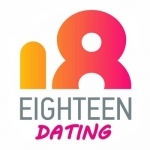
18 Dating - meet me online
Dating, Lifestyle and Social Networking
App
18 Dating is an app for grown-ups only. It's specially designed for adults who know what it means to...
Lottie disney bookworm (1056 KP) rated Scarlet Princess in Books
Aug 30, 2021
Death was a hefty price to pay for vodka.
I mean with an opening line like that you know it’s going to be a great book right?!
Regular readers will know I’m a bit of an ElBin fangirl and often devour their books in 1 or 2 days. Scarlet Princess was no exception: I kept my kids fed and held down my full-time job for the day but the rest of the time was spent reading this amazing return into the Lochlann world.
Scarlet Princess is the first in the Lochlann Feuds series which is based approximately 20 years after Autumn’s Reign, the final in the Lochlann Treaty series. However, you don’t have to read the Lochlann Treaty in order to read Scarlet Princess: the world building, plot and characters shine just as brightly for this to be a standalone novel.
“It’s a lotus flower. They’re rare, complex flowers. Difficult to keep alive.”
“That doesn’t sound like anyone I know”
Scarlet Princess introduces us to Rowan, the Princess of Lochlann and her cousin Davin, whom we briefly met in the Lochlann Treaty. The cousins give the impression that they either go looking for trouble, or trouble just finds them! Therefore, it shouldn’t be so surprising that when we meet them, Rowan and Davin are just about to find themselves imprisoned in the neighbouring kingdom of Socair.
Sadly, Socair and Lochlann don’t have the friendliest history so getting home will be no easy feat for the cousins, if they can escape death first.
“Amicable and accommodating, Princess. I wonder if you are capable of either.“
Rowan is, without a doubt, a product of her parents: with her fiery red curls and equally fiery attitude it is easy for us to assume that Rowan takes after her father but then you find yourself internally shouting (or externally- no judgement) “why did you do that?!” and suddenly you see her mother's emotional, impulsive nature.
The smart mouth and the booziness? Well that’s just what makes Rowan, Rowan! And we love her for it!
“Am I boring you Princess Rowan?” He sighed.
“Always”
As Rowan’s journey continues though we see that she has been deeply affected by her parents’ quest for love. Our princess is quite closed off to love and is happy for a marriage to be arranged for her. At her young age Rowan equates love with warring kingdoms, losing children, losing husbands: ultimately, she equates love with loss.
Maybe that is why Rowan hides behind a mask of sarcasm and glib comments, seldom ever facing the reality of her predicament until it is too late.
I didn’t want the kind of love that could break you.
Behind her sarcasm though it is clear Rowan cares deeply about issues such as poverty and equality. She is forced to see that her life is very different in Lochlann, where villagers are not suffering and are looked after by their leaders; women are not seen as quiet mice who need protecting as they are in Socair. Maybe, just maybe, her life in Lochlann wasn’t as bad as she thought? But will Rowan ever see Lochlann again?
Besides, I never had been good at making the smart choice.
The cast of characters surrounding Rowan are equally as amazing as our princess. Davin is a ladies’ man just like his father, Iiro is authoritative one minute but then casually tortures his brother sensibilities the next and Mila is a great friend who comes swooping into Rowan’s life – there is definitely more to Mila than meets the eye though.
Rowan’s escort through Socair and the poor soul on the other end of most of her sarcasm is Lord Theodore, her captor and the heir to the Elk clan. Theo is fair where Rowan is fiery; stoic where she is scandalous and the tension between them …. oof it’s enough to make you swoon!
“You know when something just catches your attention and you can’t explain it?“
I loved revisiting Lochlann only to be immersed in the Kingdom of Socair: the mysterious enemy lurking behind the mountain. The 9 clans created a whole new dynamic from the previous books and the plot arc could have easily got lost within all the clan politics but it flowed beautifully.
All I will say is that I really shouldn’t trust Robin and Elle with happy endings – they will always rip it away with a few chapters to go. These two are the Queens of cliff-hangers!
Grab your copy of Scarlet Princess on August 27th 2021. Devour it in one day and then join me anxiously anticipating the sequel, Tarnished Crown in November 2021.
I mean with an opening line like that you know it’s going to be a great book right?!
Regular readers will know I’m a bit of an ElBin fangirl and often devour their books in 1 or 2 days. Scarlet Princess was no exception: I kept my kids fed and held down my full-time job for the day but the rest of the time was spent reading this amazing return into the Lochlann world.
Scarlet Princess is the first in the Lochlann Feuds series which is based approximately 20 years after Autumn’s Reign, the final in the Lochlann Treaty series. However, you don’t have to read the Lochlann Treaty in order to read Scarlet Princess: the world building, plot and characters shine just as brightly for this to be a standalone novel.
“It’s a lotus flower. They’re rare, complex flowers. Difficult to keep alive.”
“That doesn’t sound like anyone I know”
Scarlet Princess introduces us to Rowan, the Princess of Lochlann and her cousin Davin, whom we briefly met in the Lochlann Treaty. The cousins give the impression that they either go looking for trouble, or trouble just finds them! Therefore, it shouldn’t be so surprising that when we meet them, Rowan and Davin are just about to find themselves imprisoned in the neighbouring kingdom of Socair.
Sadly, Socair and Lochlann don’t have the friendliest history so getting home will be no easy feat for the cousins, if they can escape death first.
“Amicable and accommodating, Princess. I wonder if you are capable of either.“
Rowan is, without a doubt, a product of her parents: with her fiery red curls and equally fiery attitude it is easy for us to assume that Rowan takes after her father but then you find yourself internally shouting (or externally- no judgement) “why did you do that?!” and suddenly you see her mother's emotional, impulsive nature.
The smart mouth and the booziness? Well that’s just what makes Rowan, Rowan! And we love her for it!
“Am I boring you Princess Rowan?” He sighed.
“Always”
As Rowan’s journey continues though we see that she has been deeply affected by her parents’ quest for love. Our princess is quite closed off to love and is happy for a marriage to be arranged for her. At her young age Rowan equates love with warring kingdoms, losing children, losing husbands: ultimately, she equates love with loss.
Maybe that is why Rowan hides behind a mask of sarcasm and glib comments, seldom ever facing the reality of her predicament until it is too late.
I didn’t want the kind of love that could break you.
Behind her sarcasm though it is clear Rowan cares deeply about issues such as poverty and equality. She is forced to see that her life is very different in Lochlann, where villagers are not suffering and are looked after by their leaders; women are not seen as quiet mice who need protecting as they are in Socair. Maybe, just maybe, her life in Lochlann wasn’t as bad as she thought? But will Rowan ever see Lochlann again?
Besides, I never had been good at making the smart choice.
The cast of characters surrounding Rowan are equally as amazing as our princess. Davin is a ladies’ man just like his father, Iiro is authoritative one minute but then casually tortures his brother sensibilities the next and Mila is a great friend who comes swooping into Rowan’s life – there is definitely more to Mila than meets the eye though.
Rowan’s escort through Socair and the poor soul on the other end of most of her sarcasm is Lord Theodore, her captor and the heir to the Elk clan. Theo is fair where Rowan is fiery; stoic where she is scandalous and the tension between them …. oof it’s enough to make you swoon!
“You know when something just catches your attention and you can’t explain it?“
I loved revisiting Lochlann only to be immersed in the Kingdom of Socair: the mysterious enemy lurking behind the mountain. The 9 clans created a whole new dynamic from the previous books and the plot arc could have easily got lost within all the clan politics but it flowed beautifully.
All I will say is that I really shouldn’t trust Robin and Elle with happy endings – they will always rip it away with a few chapters to go. These two are the Queens of cliff-hangers!
Grab your copy of Scarlet Princess on August 27th 2021. Devour it in one day and then join me anxiously anticipating the sequel, Tarnished Crown in November 2021.
Dean Gregory (18 KP) rated Tsuro in Tabletop Games
Jun 2, 2019
Quick to play (3 more)
Simple to learn
Interesting concept
Charming
Very little scope for strategy (1 more)
Not much replay value
A Path Into Gaming
Tsuro is a game with a very simple concept: be the last player on the board. You do this by laying tiles which link to create winding paths around the board, which inevitably end up running off the board altogether. But be careful - colliding with another player results in a double elimination.
Because it boasts such trivial mechanics, it is very easy to pick up and play a few rounds quickly (some games can last under 10 minutes including setup), as well as being one that young children could enjoy. The player meeples have a good quality feel, and it can be satisfying watching the winding paths in the game board grow.
However, it very quickly becomes obvious just how simple this game is - winning is often less about trying to run your opponents off the board as it is trying to keep yourself in play for as long as possible, until you inevitably take yourself out of the game.
Tsuro, then, is an inviting game for introducing regular folk to the mad world of tabletop gaming, and is a solid option for beginning a proper games night with its simplicity and charm. I used it recently myself as a sweetner to help ease a new player into game night, and it worked a treat. It probably won't make regular appearances however.
I like it. Worth a look.
Because it boasts such trivial mechanics, it is very easy to pick up and play a few rounds quickly (some games can last under 10 minutes including setup), as well as being one that young children could enjoy. The player meeples have a good quality feel, and it can be satisfying watching the winding paths in the game board grow.
However, it very quickly becomes obvious just how simple this game is - winning is often less about trying to run your opponents off the board as it is trying to keep yourself in play for as long as possible, until you inevitably take yourself out of the game.
Tsuro, then, is an inviting game for introducing regular folk to the mad world of tabletop gaming, and is a solid option for beginning a proper games night with its simplicity and charm. I used it recently myself as a sweetner to help ease a new player into game night, and it worked a treat. It probably won't make regular appearances however.
I like it. Worth a look.
